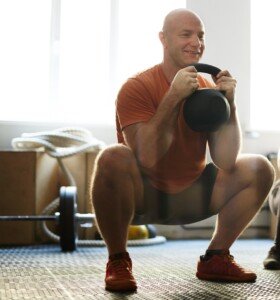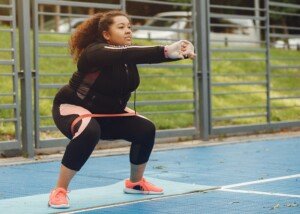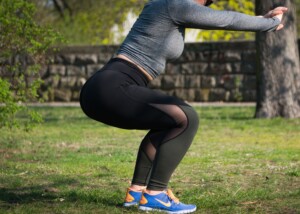
Can deep knee squats hurt the knees?
Assume the squats are executed with feet flat on the floor, and that “deep” means the thighs have surpassed the position of being parallel to the floor.
That’s the question I posed to Dr. Mark Galland,orthopedic surgeon, sports medicine specialist and physician at Orthopaedic Specialists of North Carolina.
“Performing deep squats does not necessarily cause direct harm to the knees,” begins Dr. Galland.
He also points out three conditions that can be conducive to an increased risk of injury or pain to the knees. They are as follows:
“(1) an increase in the bend of the knee or depth of the squat,
(2) over an extended period of time, or
(3) with greater frequency of the activity.”
Keep on Squatting—Smart and with Good Form
“That is not to say that doing deep knee squats should be considered an unsound movement; it only means that, in some cases, caution should be used in order to reduce the chance of injury.”
People who “injure” or “hurt” their knees deep squatting most likely executed poor form, such as tracking the knees ahead of the feet.
This can happen if their heel is elevated on a plank of wood, or if they dorsiflex at an unusually large range of motion (i.e., the “ankle flexibility” that’s needed as one descends into the squat).
Exaggerated dorsiflexion can cause the knees to travel well-ahead of the feet.
Another source of harm can be the knees not tracking properly over the feet, meaning, the knees point out at a certain angle, but the feet don’t match up with this angle.
“Deep knee squatting under extreme weight can also sometimes result in cartilage tears, and prolonged, repetitive deep squatting over a period of time may carry the risk of leading to arthritis under the knee cap, but the likelihood can be minimized by controlling the risk factors above,” says Dr. Galland.
“As with many exercise-related movements, it is reasonable to propose that the potential benefits derived from strengthening the muscles surrounding the knee as a result of doing the squats may outweigh the relatively small risk of injury associated with the movement.”
As a former certified personal trainer, my recommendation is to know the risk factors, concentrate very seriously on executing textbook form, and include squats in your fitness program.
Dr. Galland has authored many book chapters and papers in sports medicine. His advice and consultation have been sought by world-class athletes in track and field and Major League Baseball.
 Lorra Garrick is a former personal trainer certified by the American Council on Exercise. At Bally Total Fitness she trained clients of all ages for fat loss, muscle building, fitness and improved health.
Lorra Garrick is a former personal trainer certified by the American Council on Exercise. At Bally Total Fitness she trained clients of all ages for fat loss, muscle building, fitness and improved health.
.



























